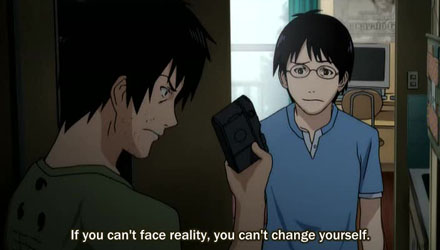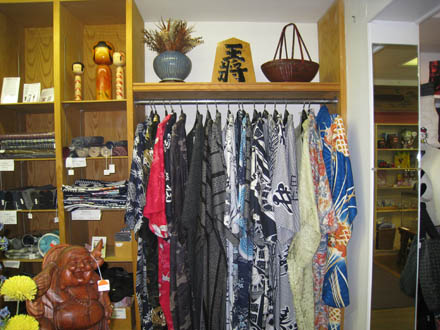 If you’ve followed my Tumblr, you know that I did indeed manage to apply to 30 jobs in as many days. But since I haven’t found a job yet, I’m going to keep going through December.
If you’ve followed my Tumblr, you know that I did indeed manage to apply to 30 jobs in as many days. But since I haven’t found a job yet, I’m going to keep going through December.
It’s fitting that I finished watching Welcome to the NHK at the same time as I finished NaNoJobMo. I say this because NHK had a lot to do with what I’m going through right now. I’m going to talk plainly, so if you haven’t finished NHK yourself, let this be your giant spoiler alert!
Still want to read my pseudo-review? Okay. There’s two parts of NHK that I want to discuss.
First, I think the message of NHK is that being a hikikomori NEET is not a disease, but a privilege. Not just anyone can hole up in their room playing games all day and being served food. A NEET needs enablers to pay a stipend so they can stay fed, clothed and under a roof. When these things come unraveled (as they do for two different NEETs in the series), the afflicted are suddenly able to find the strength to leave the house and start working a job, any job.
This applies to my life by reminding me how lucky I am. Like Sato throughout most of the series, I don’t have to work anything bigger than my job at the gym right now in order to survive. I can afford to spend an entire month applying to jobs without worrying about whether I’ll eat today. I wouldn’t say I’m a NEET since I would rather be working, but it’s the same premise.
Second, I was very affected by the eroge sub-plot. I loved when Sato and Yamazaki decided to create their own dating-sim video game. It may have been a porn game, but it’s something that Sato got really into creating. When Sato spent late nights working on the eroge script, his realization was my own — “As long as I am working toward something I care about, I am not a NEET.” In that moment, Sato has found his career.
It’s a beautiful turning point in the series. Even though the eroge never amounts to anything profitable, what matters is how much he cared about creating it. This is how I feel about my various blogs: this one, NaNoJobMo, and Japanator. Even though I haven’t found a job yet, I’ve found a rewarding career.
Readers, do you have a job that is different from your career? Also, what did you think of Welcome to the NHK?














